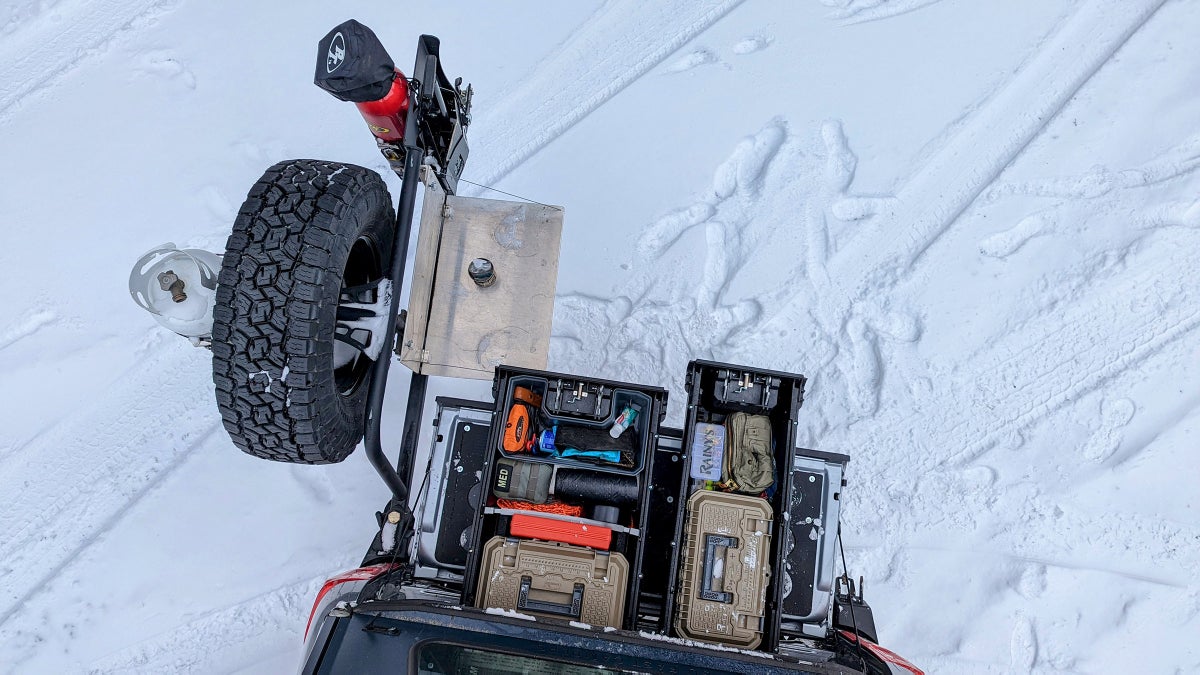No products in the cart.
Outdoor Adventure
Modify Your Truck for Maximum Utility in the Backcountry
There’s not much room in the back of a mid-size truck with a five-foot bed. But I still manage to find space for much more than the bare essentials, while retaining the ability to haul ordinary cargo and camping gear. Here’s how.
Why Not Just Get A Bigger Truck?
The answer’s simple: I prefer the dimensions of smaller vehicles. Not only are they easier to live with in civilization—I live downtown, in Bozeman, Montana—but the same dimensions that make them easy to park, and easy to fit down narrow streets, also makes mid-size trucks like my Ranger substantially easier to drive off-road. Many of the dirt roads and trails I drive across the western United States, Canada, and Mexico are narrow enough that I need to fold the Ranger’s mirrors in some places. On technical terrain the relatively short wheelbase makes climbing over large obstacles substantially less difficult.
But as you’re about to see, I also lean heavily into preparedness. Whether it’s a flat tire, unexpectedly deep mud, an accident, or an injury, I prioritize the ability to handle it myself, using what I carry with me. But, fitting everything I need into a relatively small platform takes creative solutions. Let’s start from the back, and work forward.
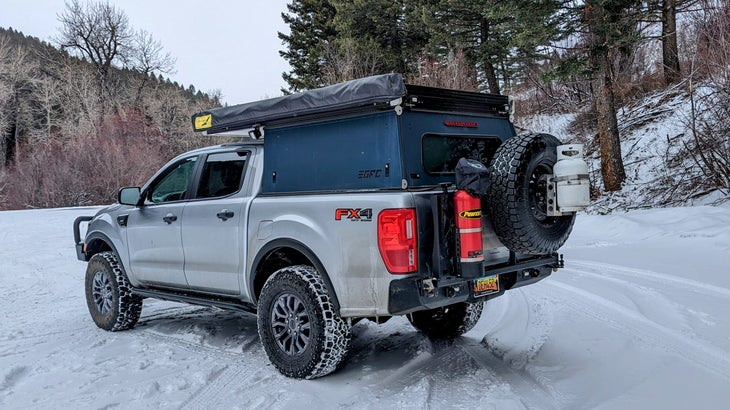
Use Your Rear Bumper
Since I upgraded to larger 34-inch tires, I was no longer able to fit a matching spare in the stock location under the vehicle. Carrying the big wheel and tire in the bed was a no-go from the beginning as it would’ve eaten up too much space. So, I fitted an aftermarket steel bumper complete with a swingout tire carrier.
Carrying your spare tire, and other heavy, bulky gear on the rear of your vehicle offers many advantages. Not only is that stuff located in your vehicle’s wind shadow where it won’t impair your fuel economy, but it’s also more accessible than if it’s stored under your truck where you may not be able to access it in snow, sand, or mud.
My bumper is a prototype made by Relentless Fabrication. It decided not to support the Ranger with a production run. You can achieve similar functionality with a Rig’d Supply Ultraswing (from $1,500). That has the advantage of mounting to any two-inch receiver, without requiring you replace the whole bumper.
In addition to the spare, the swingout also makes room for a Power Tank (from $650), a DMOS Delta shovel ($250), a folding table, and a five-pound propane tank. Not only is that a lot of stuff I don’t have to try and fit inside the bed, but it also provides convenient access to essential tools I use frequently, or which I may need to access in an emergency. In the case of the propane tank (mounted using a bracket sold by Power Tank), this location eliminates the potential for any fumes to leak into the enclosed bed or tent.
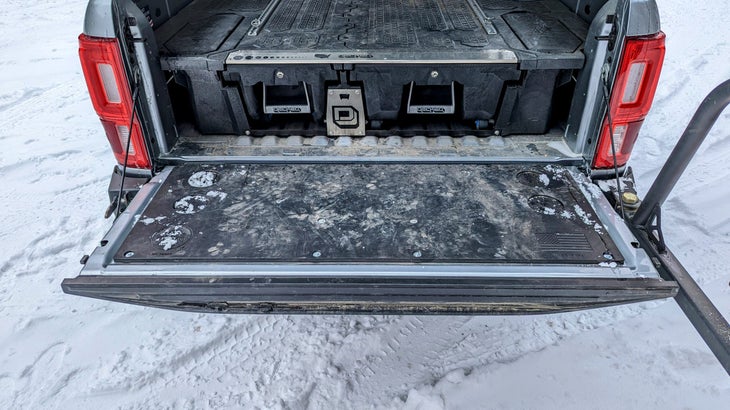
How to Make Your Tailgate Useful
Mankind has long used pickup tailgates as places to sit, but their ridged contours limit comfort and make it difficult to employ them as tables.
Shifting most table duties to the little fold down that a buddy and I made for the swingout allows me to keep the tailgate free of most clutter, most of the time. That way my dogs can get in and out, I can open drawers, and climb into my tent. Still, some situations like meal prep, or roadside repairs call for a larger surface. Enter Mountain Hatch.
Making flat work surfaces that bolt in place of the tailgate fascias for most common pickups out of food-grade plastic, Mountain Hatch ($250) is able to turn an otherwise impractical surface into a multipurpose tool. Equal parts work bench and meal-prep surface, it adds a surprising amount of practicality without taking up any space. I just need to find a way to fill up the bolt holes so they’ll stop collecting meat juice.
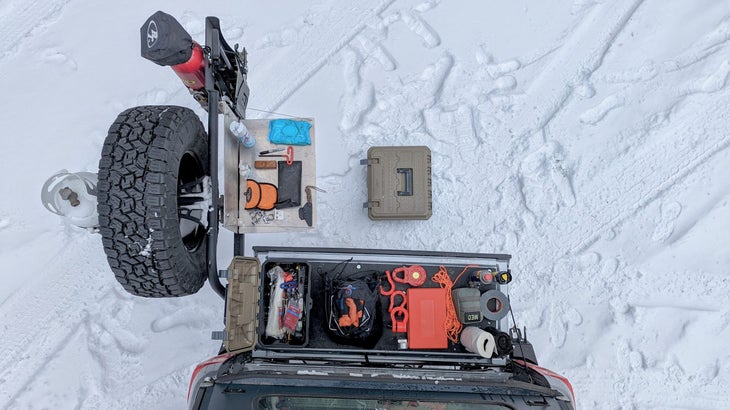
The Best Drawers to Hold Your Stuff
The Decked system is, hands down, the most practical thing I’ve added to this truck. Since this is the mid-size version, mine includes one narrow drawer (eight inches wide) and one wider drawer (11 inches). Both are 53 inches long. Systems that fit full-size trucks offer two wide drawers, and obviously systems designed for longer beds include longer drawers to match.
I use the wide drawer to hold stuff that needs to live in the truck full-time. In the back of the drawer I carry a full recovery kit inside a Decked D-Box ($60). In front of that I shove my tire repair kit. Then, in a Decked Crossbox ($50), there’s room for my tool kit. A divider ($20) keeps some small essentials—trash bags, duct tape, Fix-a-Flat, first aid kit—from rolling around. And finally, a Drawerganizer ($30) fills in the area around the drawer handle, and catches stuff like multitools, baby wipes, an air down tool, and other odds and ends.
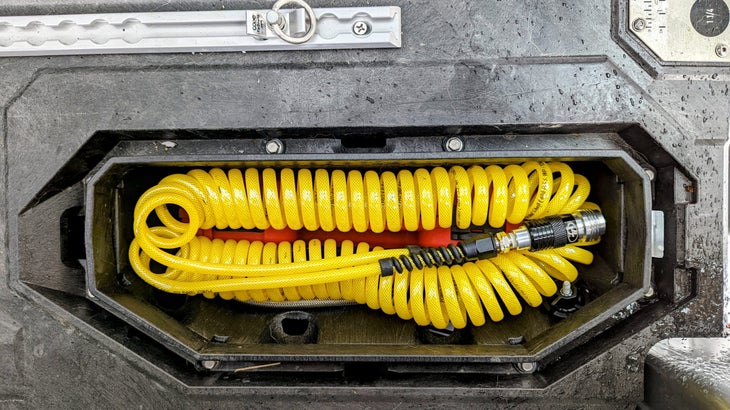
I use the narrow drawer as a flexible space, swapping load outs depending on what I’m doing. The same crossboxes that fit across the wide drawer fit perfectly into the narrow drawer lengthwise. There’s room for two, plus about 10 inches of open space.
Packing most stuff into D-Boxes and Crossboxes just helps keep it organized, portable, and modular. I can store, say, my dog first aid kit, in a Crossbox, in my garage, when I’m not taking the mutts out with me, then just grab it and throw it in a drawer when I need it. And when I do that, I’m optimizing for space.
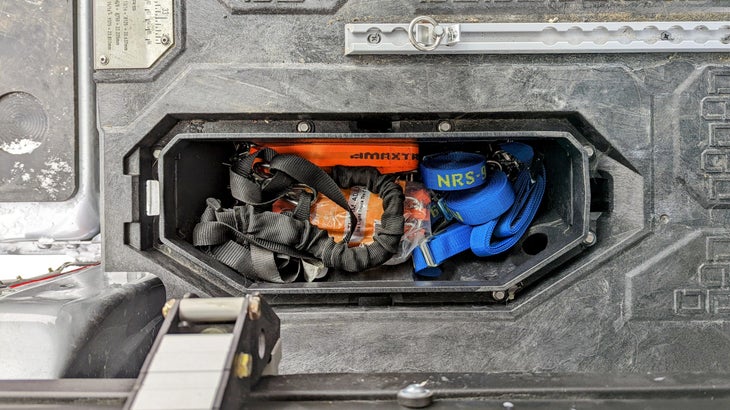
If I need to carry long guns, that narrow drawer can easily be converted into a gun locker with the addition of Decked Piecekeepers ($75), which tightly grip two firearms in foam jaws. The neat thing about using the drawer for this, instead of a Pelican case, is that the guns are able to remain totally out of sight, and secured by my locking tailgate. For some extra peace of mind, I also added Decked’s lock kit ($50) to both drawers. These are little more than filing cabinet locks, but are still enough to at least limit access to any contents. That’s enough to keep kids, or friends, from accessing your guns in camp.
The corners of the Decked system are supported by strong pillars made out of the same indestructible HDPE plastic as the platform and drawers. Where the drawers are protected enough to completely prevent water ingress even during pressure washing, the storage areas inside these pillars—Decked calls them ammo cans—can allow some water inside. So, I use them to store essentials that I don’t mind getting a bit wet here and there. The left one holds a socket set and the air hose and inflator for my Power Tank. The right carries my tire chains, their stretchers, and extra tie down straps. I’ve added Decked Core Trax ($140) to the top of the system, allowing me to secure any loads inside the bed.
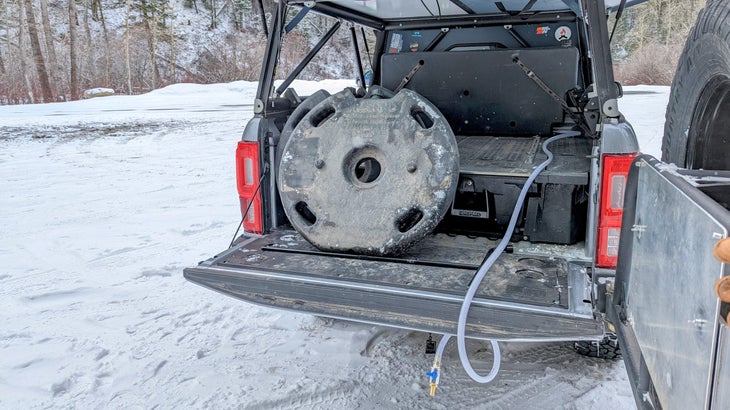
What About Water and Fuel?
Humans need to consume at least one gallon of water a day. My three big dogs probably need more. Plus, it’s nice to be able to do dishes, rinse off the Mountain Hatch, and wash your hands. So it makes sense for me to carry a lot of water around, and to make that water accessible with a faucet.
A 10 gallon water tank from Front Runner ($259) makes it easy. Strapped down at the front of my bed with old Pelican foam to keep it from knocking around, it takes up only two-and-a-half inches of space. I extended the included half-inch-diameter water hose to 10-feet long, so it reaches well out of the back of the truck. A valve in the faucet allows me to turn it off and on as needed, and the tank’s height supplies surprisingly decent water pressure.
Making use of the old spare tire location, and pulley, underneath the truck makes a lot of sense. But until recently, there were no products designed to take advantage of that space and mechanism. Enter: the Trail’d Universal Spare Tank ($175). Each of them holds a full six gallons of liquid, and is only three inches thick with a 29 inch diameter. That means you you can stack up to three of them in about the same space as a stock highway tire. The donut hole in the center matches the dimensions you’ll find in most wheel hubs, allowing you to pass the pulley’s foot through it, then secure the tanks in the same fashion you would a spare tire.
Are the tanks a pain to get to? Less than I feared, although I still wouldn’t want to do it at night, in a storm, on the side of a busy highway. Are they exposed to damage? They’re made from robust polyethene, and should stand up to thrown rocks without damage. Tucked up between your frame rails, I really can’t see a way you’d slam them on any surfaces.
I carry two. Given that a gallon of gas weighs 6.3 pounds and each tank is 10 pounds on its own, they can add up to over 95 pounds of total weight. That weight is carried as low and as centrally as possible, but is still a lot. So, I keep them empty until I need them.
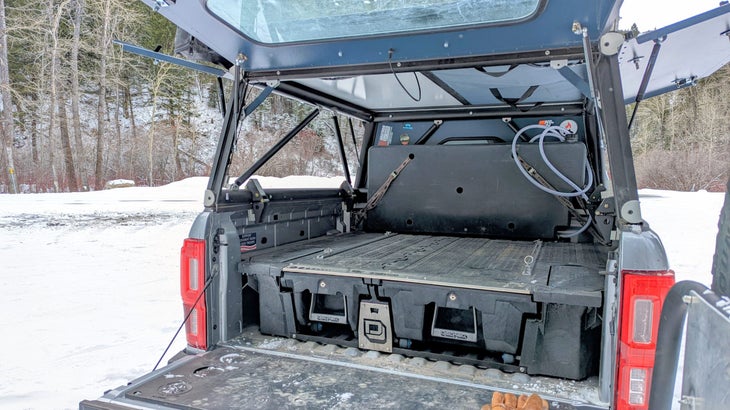
Where Do You Sleep?
I’ve written plenty about the GoFastCampers Platform (from $7,700) before, so I’ll keep this brief. But it’s worth mentioning, because it’s a major factor in being able to carry and organize all my stuff in a small bed. Not only did I manage to mount a pair of Maxtrax recovery boards ($300) to one of the lift panels, but also by enclosing the bed securely, up to the height of the cab, it adds an immense amount of useable space. Those lift panels run the entire length and width of the bed, allowing for easy access to anything in it. I’m also able to keep a thin self-inflating foam sleeping pad, and sleeping bags in the closed tent. Something I do all of the time, just in case.
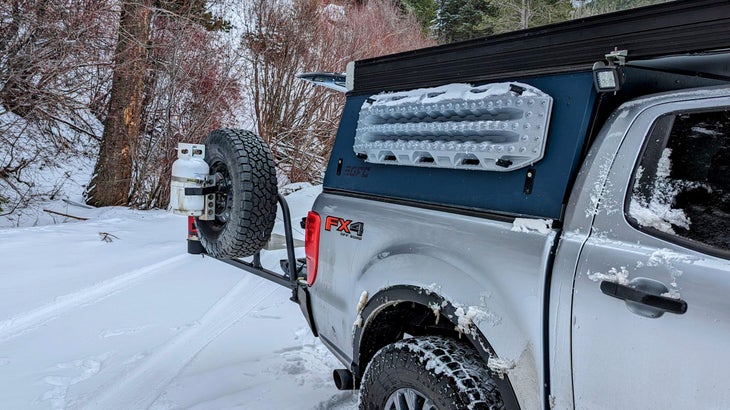
All told, this combination of gear, set up this way, doesn’t just mean I’m prepared for the challenges of daily driving. Because my truck is rigged up and ready to go all of the time, it also means I can handle pretty much anything in the backcountry. Heck, so long as I remember to wear clothes and grab a six-pack along the way, I can camp anytime, anywhere. And that’s immensely reassuring as I venture outside.
Source link

